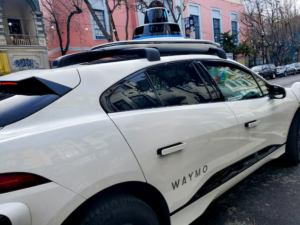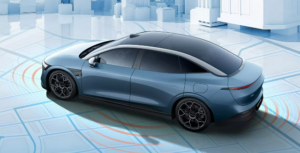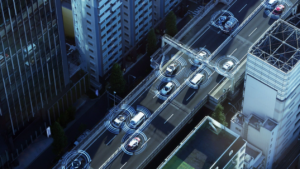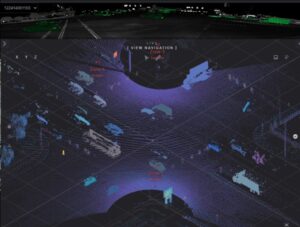
Vueron Newsletter
No. 134
2024.09.10
| TIER IV Wins Contract to Develop Robotaxis and Autonomous Trucks | ||
| Autonomous Driving | Alphabet’s Waymo robotaxi unit doubles its paid rides in three months | |
| Zeekr gets L3 autonomous driving test permit in Hangzhou after Shanghai | ||
| Vehicle-to-Everything Communication Gets New RoadmapMay Mobility Champions Codesign In Autonomous Vehicle Disability Access | ||
| UDOT among first in nation to implement LiDAR safety software |
1. TIER IV Wins Contract to Develop Robotaxis and Autonomous Trucks
- TIER IV was selected for a METI project to deploy robotaxis for transportation and autonomous trucks for logistics, with a grant of US$4.5 million for FY 2024.
- TIER IV is launching a robotaxi business in Tokyo, collaborating with Toray Carbon Magic, Nihon Kotsu, and AMANE for vehicle development, PoC tests, and hub verification.
- TIER IV is also accelerating autonomous truck development, collaborating with Isuzu and Mitsubishi Fuso for vehicles and conducting PoC tests on the Shin-Tomei Expressway.
- The initiatives highlight TIER IV’s commitment to innovation and efficiency in transportation and logistics.

TIER IV will lead a METI-supported initiative to deploy robotaxis and autonomous trucks, with a $4.5 million grant in fiscal year 2024.
2. Alphabet’s Waymo robotaxi unit doubles its paid rides in three months
- Waymo doubled its paid robotaxi rides to 100,000 per week in just over three months, expanding service areas and allowing more people to access its autonomous ride-hailing services.
- Alphabet plans a multi-year $5 billion investment in Waymo despite ongoing skepticism, regulatory scrutiny, and federal investigations surrounding autonomous vehicle technology.
- Waymo operates a fleet of about 700 vehicles, offering uncrewed robotaxi services in San Francisco, metro Phoenix, the San Francisco Peninsula, and parts of Los Angeles.
- Waymo faces growing competition from Tesla, General Motors’ Cruise, Amazon’s Zoox, and China-based WeRide, all of which are advancing their autonomous vehicle initiatives.

Waymo has rapidly expanded its robotaxi operations, doubling weekly rides to 100,000 and securing a $5 billion investment from Alphabet, as competition in autonomous driving heats up.
3. Zeekr gets L3 autonomous driving test permit in Hangzhou after Shanghai
- Zeekr has been granted permission to conduct L3 autonomous driving tests in Hangzhou, Zhejiang province.
- The tests will focus on Zeekr’s SEA Intelligent Driving system on highways and urban expressways.
- Hangzhou is the second city after Shanghai where Zeekr has received permission for L3 testing.
- Zeekr’s vehicles, initially using Mobileye solutions, are now moving towards an in-house developed intelligent driving system.
- The company upgraded its system to SEA Intelligent Driving 2.0, aiming to deliver new NZP and NZP+ features by the end of 2024 and mid-2025, respectively.
- Nio, a local competitor, received an L3 test license in Shanghai in December 2023 and was listed among the first L3/L4 autonomous driving pilot carmakers in China.

Zeekr has been authorized to conduct L3 autonomous driving tests in Hangzhou, marking its second city after Shanghai for such trials.
4. Vehicle-to-Everything Communication Gets New Roadmap
- The U.S. Department of Transportation (DOT) is accelerating the rollout of vehicle-to-everything (V2X) technology with a roadmap titled “Saving Lives with Connectivity.”
- V2X enables wireless communication between vehicles, road users, and infrastructure, aiming to enhance road safety and reduce fatalities.
- The DOT plans to implement V2X across 20% of the National Highway System by 2028, with full deployment by 2036 in major metro areas.
- Challenges include securing stakeholder buy-in, infrastructure investment, spectrum allocation, and cybersecurity concerns.
- The DOT and the National Transportation Safety Board emphasize V2X’s potential to save lives and transform transportation safety.

The DOT has outlined a national roadmap to accelerate the adoption of V2X technology, aiming to improve road safety across the U.S.
5. UDOT among first in nation to implement LiDAR safety software
- The Utah Department of Transportation (UDOT) is utilizing LiDAR technology to enhance safety at intersections by providing a 3D view of vehicle, pedestrian, and cyclist movements.
- LiDAR’s detailed data allows traffic engineers to identify safety issues, such as near-miss crashes and inadequate signal timing, to implement targeted countermeasures.
- UDOT has installed LiDAR at multiple intersections in Salt Lake City and is testing its integration with connected vehicle technology in Provo.
- The technology’s high accuracy and affordability are driving UDOT’s plans to expand its use with the support of a federal grant and partnership with Panasonic.

UDOT is using LiDAR technology to create 3D views of intersections, enhancing safety for pedestrians and cyclists by identifying potential hazards.
*Contents above are the opinion of ChatGPT, not an individual nor company

